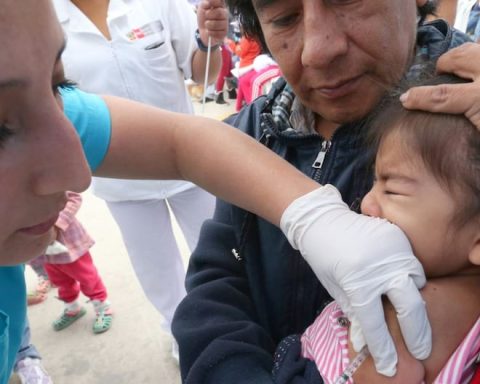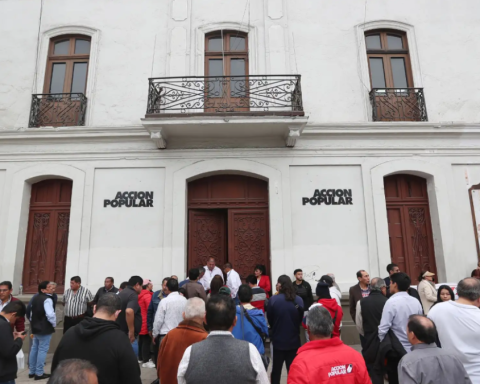The 5th Report of delinquencycarried out by Equifax and Emprende UP, shows that as of December 2021 the delinquent debt has been leveled to the amount prior to the pandemic. As of 2019, there was, in the financial system, a delinquent debt of 9,349 million soles and now as of December 2021, there is a total of 9,620 million soles.
This latest number represents a 27% decrease in debt compared to December 2020, which increased by 41%.
As for delinquent people, the study shows that, as of December 2021, there has been a 40% reduction in people with overdue debts, thus returning to the way it was before the start of the pandemic and whose percentage in relation to the total number of debtors, It went from 10.7% in 2019 to 9.4% in 2021.
LOOK: Sunarp presents updated regulatory compendium after a regulatory debugging work
“We are currently seeing how the 2021 numbers are leveling out to the data before the pandemic. For example, if we look at the number of delinquent people for 2019, we had a total of 780,000 and for December of last year we had 657,000, in the financial system. This has to do with the process of economic reactivation and the opening of capacity and lifting of restrictions in all sectors,” comments Sergio Soto, Business Development Manager at Equifax.
Debt and defaulters in the NON-Financial System
During 2020 there was a decrease in delinquent debt of 11% compared to 2019 in institutions that are not part of the financial system and which has been maintained until the end of last year. In this way, as of December 2019, the year closed with a total of 22 thousand 855 million soles and by December 2020 there was a delinquent debt of 20 thousand 327 million soles.
“Companies that do not belong to the financial system, such as schools, universities, direct sales companies or any company that provides a service or product on credit, stopped their commercial activity during the pandemic. For this reason, we consider that the delinquent debt was also reduced during 2020″, comments Javier Salinas, director of the Center for Entrepreneurship and Innovation of the Universidad del Pacífico (Emprende UP).
:quality(75)/cloudfront-us-east-1.images.arcpublishing.com/elcomercio/EH3S43YN6NDNHFMDHFA7CY7T4Y.PNG)
Likewise, at the level of delinquent people, there is also evidence of a 20% reduction during 2020 with 6 million people compared to the 7 million delinquent people last year.
Delinquent debt by type of credit
The Equifax and Emprende UP report indicates that, as of December 2019, 17% of the delinquent debt of the financial system was credit card, in 2020 it was 25% and by 2021 it represents just 7%. This can be seen reflected in the reduction in the placement of cards, going from 5 thousand 738 for 2019 to 4 thousand 618 for December of last year.
“This happens because there is a direct impact of the pandemic on the financial system. As there is less employment, there is a risk of non-payment of debts, and, therefore, the banks took measures such as cleaning portfolios and canceling credit cards”, adds Soto.
:quality(75)/cloudfront-us-east-1.images.arcpublishing.com/elcomercio/RBE5FFRL4ND43NVQNHELMROC5Y.PNG)
Delinquent debt by geographical area
As of December 2021, Lima continues to be the department that has the largest amount of delinquent debt with a total of 3,411 million soles, which is equivalent to 844,000 delinquent people. It is followed by Amazonas with a debt of 2,571 million soles with a total of 242,000 people and Cajamarca with a total of 2,201 million soles, which is reflected in 393,000 delinquent people.
However, the report shows that the department of Amazonas ranks first in delinquent debt per inhabitant (S/. 3,119 soles), which means that 29% of the population is indebted. Followed by Cajamarca with a debt of S/. 1583 soles (28% of defaulters in this city)
At the district level, the highest delinquent debt is found in the district of San Juan de Miraflores with a total of 682 million 385 thousand soles. In second place is the district of San Martín de Porres with a debt of 265 million 861 thousand soles and in third place the district of San Juan de Lurigancho with a total of 123 million 336 thousand soles. However, it is this last district that ranks first in terms of delinquent debt per inhabitant with a total of 2,585, equivalent to 30% of the delinquent population.
Credit rescheduling
In September 2020, 42% of the population rescheduled their loans with a total amount of 80 million 496 thousand soles and by December 2021 only 6% of the population chose to reschedule their debts and whose amount amounts to 19 million 16 thousand soles. On the other hand, of the total loans rescheduled for September 2020, 13% fell into arrears and in December 2021 of the total that rescheduled their debts, 34% fell into arrears.
Finally, from Equifax and Emprende UP they consider it necessary to continue with the constant monitoring of delinquency indicators of the different sectors of our economy in order to make informed decisions.
RECOMMENDED VIDEO:
:quality(75)/cdn.jwplayer.com/v2/media/7mYBXhN0/poster.jpg)















